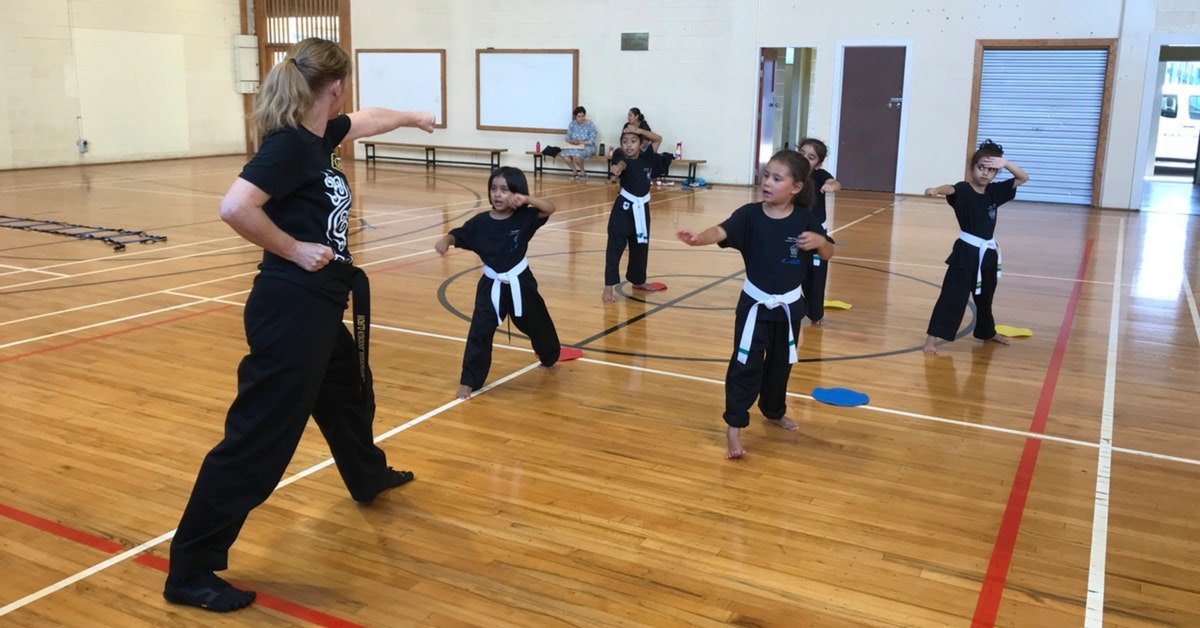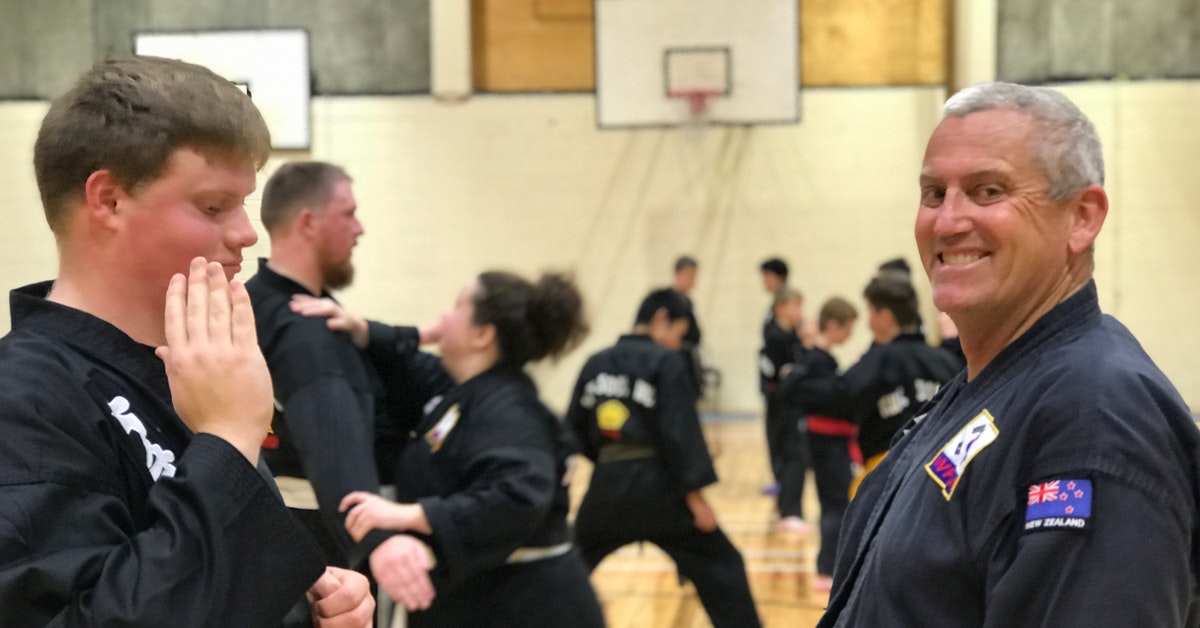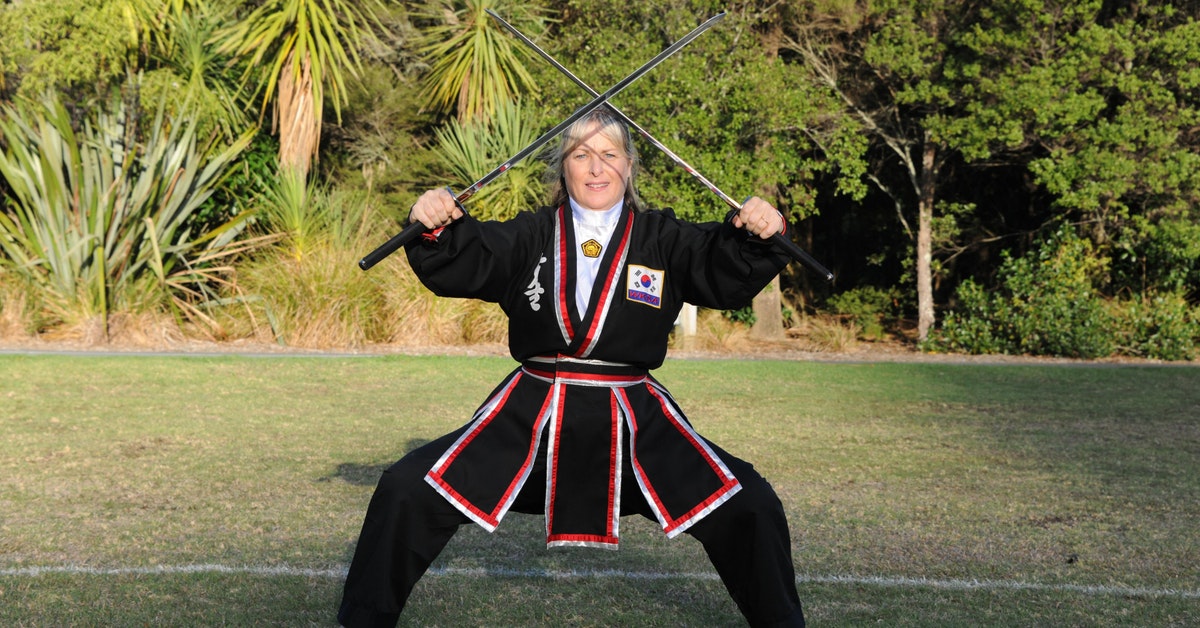|
Teaching children the traditional Korean martial art of Kuk Sool Won™ is a great joy for me. Sure, it can be a bit like herding feral kittens at times, especially when they are tired near the end of the school term. It can also be frustrating when they can’t remember what you have taught them or when siblings fight in class. But these are minor irritations when compared with the overall joy teaching this age group brings.
So why do I enjoy teaching martial arts to children so much?
Teaching martial arts to kids is not easy and does not come naturally to everyone. While there are many factors that make a good teacher, fundamentally an instructor must have a passion for teaching children. If this exists, the kids will be “smiling, sweating and learning” (using the words of Master Martin Ducker of Kuk Sool Won™ of Lowestoft and Halesworth). This makes for a great environment for everyone. JKN Jane Hurst First degree black belt and school owner Kuk Sool Won™ of Onewhero Copyright © 2018. Kuk Sool Won™ of Onewhero. All Rights Reserved.
0 Comments
For SBN Caroline and I, our martial art of Kuk Sool Won™ is more than a hobby. It is our job, our passion and central to the way we live our lives. However, for most people, martial arts are a recreational activity. In our experience, students participate to get fit, learn some self-defense skills, build their confidence, and to enjoy the companionship of their fellow students. They set goals around achieving a certain rank and are motivated by the new material they learn at each new belt level. While the practice of martial arts is important, as with any recreational activity, it must fit in around many other life commitments.
A recreational martial art usually involves around 2 to 4 hours of structured training a week in a class environment. While this is enough time to learn the basic skills, in our martial art of Kuk Sool Won™ there is a lot of material to learn and perfect, especially as a student progresses towards black belt (and beyond). This invariably means our students need to practice their material outside of class time. This can be challenging, particularly for those students who are time poor or do not have someone they can practice with outside of classes. As well, students may not always have a training partner at the same belt level in their school. For example, my training partner left when I was a yellow belt (after six months of training). As ours was a small school, I never had another regular training partner at my belt level. Having a fellow student of the same rank as a training partner makes training much more enjoyable, helps with motivation, and aids the learning process, as you help each other to practice and remember your material. I know from experience that it definitely makes training more difficult when you no longer have another student at your level to train with. While participating in martial arts as a recreational activity is enjoyable and rewarding, there are definitely some training challenges to be overcome. We have come up with some tips to make your training and practice more enjoyable and effective.
Martial arts training is a fantastic recreational activity. To get the most out of it, you need to be smart about how you train. The tips I have outlined above are ways to maximise the time you have available. Your instructor and other more senior students will also be a great source of knowledge. Ask for advice and be creative in the ways you train so that you can find works for you. JKN Jane Hurst First degree black belt and school owner Kuk Sool Won™ of Onewhero Copyright © 2018. Kuk Sool Won™ of Onewhero. All Rights Reserved.
In 2003, SBN Caroline arrived in New Zealand as a first degree black belt in the traditional Korean martial art of Kuk Sool Won™. She had trained at the busy UK school of Kuk Sool Won™ of Lowestoft and was expecting to join the local Kuk Sool school to continue her training. However, she found that not only were there no schools in West Auckland where she was living, there were no Kuk Sool schools in New Zealand. What would most people do in this situation? They would give up their martial arts training or start from scratch in a different style.
Undeterred and committed to continuing her training in Kuk Sool, SBN Caroline opened her own school, with the support of her family, who had also trained to first degree black belt. The early beginnings of Kuk Sool in New Zealand were humble, with her school of Kuk Sool Won™ of Auckland having only 3 students for the first couple of years. Gradually though, this has increased and over the last 15 years, SBN Caroline has promoted 25 students to 1st degree black belt. Four of these students have progressed to 2nd degree black belt. Establishing and running a school in a new location is always challenging. Being so far away from an instructor and other students at a similar level adds another degree of difficulty that few martial artists and school owners ever experience. To receive her own training, SBN Caroline must travel to Texas, at considerable personal expense. While we have been fortunate to have annual visits from her instructor in recent years, SBN Caroline has been in the challenging position of having her instruction condensed into three or four days a year. She then has to practice her material on her own, based on her memory and notes taken at the time. She must wait for several months for refinement and further instruction. In this way she has progressed from first to fourth degree black belt and is currently testing for master (fifth degree black belt). Learning a traditional martial art like Kuk Sool can be a very challenging experience. It takes years of dedication to achieve each degree of black belt. Most people give up before they even reach black belt. Few go on to achieve 2nd degree and even less progress to the higher ranks. However, the rewards of making the commitment are considerable. Training over years (and even decades) develops the body, as well as self-defense knowledge and skills. However, it does much more than teach physical skills. It also teaches the importance of dedication, tenacity, commitment, and focus. Training so far away from an instructor and in the absence of other students at a similar level, in the way SBN Caroline has, is extremely difficult but it has helped her to develop all of these characteristics. Taking the harder path can make us more resilient and better able to cope with the difficulties and challenges that life inevitably brings. The benefits of such perseverance cannot be underestimated or overstated. For some, the martial arts journey involves opening a school either through choice or by necessity as a way of continuing to train. School ownership provides the opportunity to learn by teaching and to develop a depth of understanding that is difficult to achieve by participation as student. It also develops qualities such as humility and integrity. Our students are only as good as our ability to teach them. Every person learns differently and we must adapt our teaching style accordingly. School ownership requires significant commitment and responsibility. It also requires personal sacrifice. Most school owners do not get paid and often have to subsidise the school’s running costs to ensure it can survive. Added to that is the cost of travel to visit an instructor, which from New Zealand, is always expensive. There are also no other school owners here to provide advice, moral support, or a sense of collegiality. Instead, we must be self-reliant, as well as savvy in the use of technology to build relationships with school owners in other parts of the world. 15 years ago, SBN Caroline chose an extremely difficult path when she committed to continue her Kuk Sool training in New Zealand by opening a school. I have been fortunate to be part of that journey for the last few years and to be able to learn from her and provide her with support. Her commitment to not only Kuk Sool but to each student is inspiring. She has and continues to make a difference to lives of many people. That is the true essence of our martial art. JKN Jane Hurst First degree black belt and school owner Kuk Sool Won™ of Onewhero Copyright © 2018. Kuk Sool Won™ of Onewhero. All Rights Reserved. |
Caroline and Jane Hurst
Caroline is a 5th degree black belt and Jane is a 2nd degree black belt in the traditional Korean martial art of Kuk Sool Won™ . They run 2 Kuk Sool Won™ martial arts schools in New Zealand. Archives
March 2019
Categories
All
|




